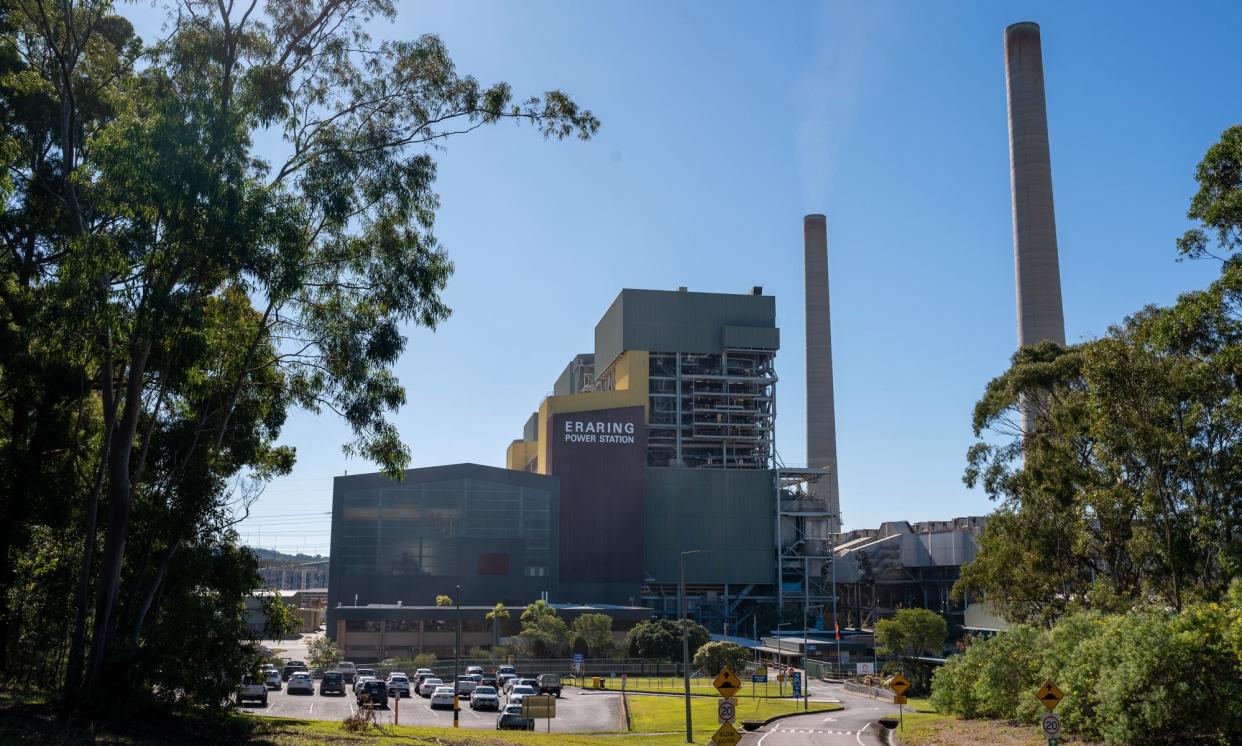Power prices rise after companies use rivals’ outages to ‘profit maximise’, Australian regulator says

Consumers will face higher energy bills after two of Australia’s biggest electricity generators used their market clout to push up wholesale power prices following unplanned outages at rival coal-fired plants, the Australian Energy Regulator says.
In a report released on Wednesday, the regulator examined what caused a “significant” price event on 8 May in New South Wales that triggered a key cumulative price threshold being exceeded for the first time in the 26-year history of the national electricity market.
The immediate prompt was “mostly unplanned” outages at Origin Energy’s Eraring power station – the country’s largest coal-fired plant – and Delta’s Vales Point facility.
“These factors created the opportunity for some market participants to profit maximise,” the AER’s report said. “While this is permissible under the National Electricity Rules, the behaviour may not have been in the best interests of energy consumers.”
Interesting AER analysis of high power prices in NSW in May: pic.twitter.com/k4UIpg6L2D
— @phannam@mastodon.green (@p_hannam) July 17, 2024
It singled out AGL Energy and EnergyAustralia (EA) for their responses, including rebidding their generation from their Bayswater and Mt Piper plants, respectively, at higher prices. These moves “put upward pressure on prices”, the regulator said.
The behaviour by AGL and EA was “quite a contrast with offer behaviour of the previous week”, the AER said.
The resulting price cap of $600/megawatt-hour ended up being in place for a week. The extended spike in prices contributed to futures prices being nudged higher, it said.
Wholesale power prices make up about a third of power bills, with retail and network costs making up the rest. An extended period of high wholesale prices could mean the latest price cuts for the 2024-25 year in some regions are short lived.
While some consumers such as large businesses can shield themselves from wholesale price fluctuations, most other consumers will have some exposure to price spikes such as was seen in the June quarter in NSW.
With implications for future power prices in NSW too. pic.twitter.com/BX82AzxNkv
— @phannam@mastodon.green (@p_hannam) July 17, 2024
Australia’s energy markets have endured a spate of incidents in recent years that have resulted in volatile results. These include an extended cold snap in early winter of 2022 that prompted regulators to suspend wholesale trading in the national electricity market for the first time. The market covers 80% of Australia’s population and spans from Queensland to Tasmania and South Australia.
Ageing coal-fired power stations have also been more prone to unscheduled outages and sometimes longer than expected repairs such as Queensland’s Callide C plant.
Guardian Australia sought comment from AGL and EnergyAustralia and asked the AER whether it would seek to have to energy market rules changed to deter rebidding or other actions that pushed up prices during a supply squeeze.


